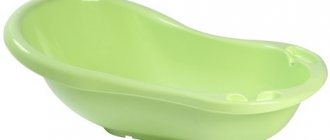How does an orthopedic pillow work?
Our spine has physiological curves in the cervical, thoracic, lumbar and sacral regions. Muscle relaxation during sleep is only possible if proper support is provided for the head and the entire spine.
How does an orthopedic pillow work?
- Supports the neck and head in the correct physiological position during rest. If we sleep on a regular down pillow, the cervical spine shifts downward, causing the head to fall over, which creates additional stress on the intervertebral discs. Overload leads to the manifestation of osteochondrosis. Events develop in a similar scenario when using large pillows. The difference is in the upward displacement of the neck and head from the physiological position.
- Allows muscles to relax. Overloading the cervical spine tones the muscles. When you sleep on a down pillow, your muscles are tense.
This explains the feeling of heaviness in the neck throughout the day.
The orthopedic pillow is made taking into account the anatomical and physiological characteristics of the human body. This is an ideal support for the cervical spine. When we sleep on an orthopedic pillow, our muscles relax.
- Helps get rid of headaches. About 18% of the inhabitants of our planet suffer from migraine. Almost every fifth person suffers from headache attacks. The causes of the disease may be different, but incorrect position of the cervical spine during sleep contributes to the development of migraines.
The neck contains great vessels that supply brain cells with oxygen and other nutrients. Overstrain of muscles leads to their spasm, as a result of which the walls of blood vessels are compressed. Oxygen deficiency causes headaches. An orthopedic pillow allows you to avoid all this, and you have a chance to become one of the lucky 82% of people who do not know what a migraine is.
- An important component in the treatment of snoring. Ronchopathy (snoring) is more often observed in men (70%). The development of snoring is associated with impaired nasal breathing (polyps, deviated nasal septum), but incorrect head position during sleep also contributes to rhonchopathy. This condition is life-threatening and can lead to apnea (stopping breathing). Orthopedic pillows will not cure snoring, but will be effective as part of complex therapy for ronchopathy. For this purpose, there is a separate series of pillows that hold the head in a position that prevents the mouth from opening.
Orthopedic pillow for newborns
The child spends the first months of life from 17 to 22 hours a day sleeping. During this period, it is necessary to arrange the sleeping place so that the newborn sleeps peacefully and nothing threatens its development. You need to place a flat and moderately hard mattress in the crib, ensure the proper temperature and humidity conditions in the room, and also pay attention to what position your baby prefers to fall asleep in. He may need an orthopedic pillow - for newborns this is the first means of preventing occipital deformation and torticollis.
Physiological postures of a baby in sleep
The natural position of a sleeping newborn is on his back, his head is turned to the side, his arms are bent at the elbows and lie relaxed with his fists up. Doctors say that this position is the safest for the baby, as it reduces the risk of sudden infant death syndrome. However, in some circumstances it is permissible to post a child
- on the stomach - the position is recommended for hip dysplasia, muscle hypertonicity, and a tendency to regurgitate, but is suitable only for daytime sleep and only under supervision (an orthopedic pillow for infants sleeping in this position is contraindicated);
- half-sided - the position is optimal for babies who spit up frequently and suffer from colic, but is not applicable to children with hip dislocations.
- difficulty turning the head in the opposite direction;
- the appearance of a depression between the shoulder and neck;
- asymmetry of the back of the head and face, etc.
- its density, height and width correspond to the age of the child and the task at hand;
- filling made of holofiber or latex prevents the growth of harmful microorganisms in it, and, as a result, the development of allergies in the baby;
- The product is easy to wash, dries quickly and does not deform.
The design of orthopedic pillows specially designed for infants promotes the adoption of a comfortable and safe sleeping position, reducing the load on the still undeveloped cervical spine of the child, its timely development, and the formation of a skull of the correct geometric shape.
They also help to avoid some diseases that are caused by incorrect sleeping position of the baby. Potential sleep problems and their solutions
It often happens that a sleeping child spins restlessly, flaps his arms, and rolls over on his tummy on his own. Because of this, he wakes up, cries and does not allow himself or his parents to sleep. To prevent this from happening, it is recommended to place the child on an orthopedic pillow: as the experience of many users shows, even the most restless children sleep much sounder and longer on them.
If a child prefers to turn his head in only one direction, he may develop torticollis. Characteristic symptoms of the disease:
In this case, pediatricians and orthopedists usually recommend using an orthopedic pillow for torticollis: the “butterfly” model is optimal for newborns.
Due to its shape, it ensures arbitrary movement of the child’s head in a given range and free breathing. L-shaped pillows are preferable for older children. Feather headrest VS orthopedic pillow for baby
Why is it allowed to use orthopedic pillows for newborns, but, oddly enough, traditional grandmother’s feather beds are prohibited? The “right” pillow has a number of advantages:
It is important to remember that the baby should be placed on a butterfly pillow so that the indentation is located under the back of his head, and the lower cushion supports the neck, but not the shoulders or back. When purchasing an orthopedic pillow to treat a baby with torticollis, you should definitely consult a doctor.
How to choose an orthopedic pillow
The choice of an orthopedic pillow must be taken responsibly, because its effectiveness directly depends on this.
Consider six key factors:
- Main destination. Classic pillows are often used for sleeping. For traveling and driving, manufacturers offer compact horseshoe-shaped pillows. There are also special foot cushions with height adjustment. They are indicated for varicose veins, joint diseases, and gout.
There are also lumbar orthopedic pillows, which are often used by drivers, office workers, and children's orthopedic pillows.
- Size. There is no universal orthopedic pillow that would suit both a tall, broad-shouldered man and a fragile girl. The pillow needs to be selected in the same way as shoes - by size. When purchasing, it is best to place a pillow under your head. If the contours of the cervical-occipital region coincide with the curves and bolsters of the pillow, and only the head and neck are located on it, then the size is chosen correctly. Orthopedic pillows of different parameters are available for sale: width from 20 to 50 cm, length from 30 to 80 cm.
For large men, large pillows are suitable (for example, 50 x 80). People of average build often buy pillows 40 x 60. The sizes of children's pillows are 20 x 30, 40 x 50. There are small orthopedic pillows for newborns.
- Height. This indicator determines at what level the head and neck will be located during sleep. The height of the pillow should be equal to the width of the shoulder + 1–2 cm (due to pressing the soft mattress with the shoulder). Shoulder width is measured along a line from the base of the neck to the edge of the shoulder. Also, the choice of pillow height depends on your sleeping position. For those who sleep on their back, pillows up to 10 cm high are recommended. Manufacturers have developed low pillows for sleeping on their stomach. High pillows (from 12 cm) or pillows in the shape of a bolster with a deep recess for the shoulder are more suitable for those who like to sleep on their side.
If you want to put your hand under your head, it means the pillow is low. If the back of the head is raised high and the chin is close to the chest, the pillow is high. Stomach sleepers will find a butterfly-shaped pillow comfortable.
- Hard or soft. Choose according to individual preferences.
Types of fillers
Three main fillers for orthopedic pillows:
- Polyurethane foam. Hypoallergenic material. Has a memory effect. When you lie down on such a pillow, you don’t need to bend or adjust anything to suit yourself - the pillow will take on all the curves of your body. When you get up from it, it will return to its original shape.
- Latex. A natural material made from the sap of the rubber tree. Latex pillows contain synthetic fibers that give them elasticity. Orthopedic latex pillows do not absorb moisture and sweat. Elastic, soft, hypoallergenic.
- Buckwheat husk. Orthopedic pillows made from buckwheat husks are a completely natural material. Buckwheat husk does not have a memory effect, so this pillow needs to be adjusted to suit you. Also, sleeping on it is accompanied by a certain rustling noise, which can create discomfort. But buckwheat husk is an excellent massager and an effective remedy for headaches.
Children's orthopedic pillows: pros and cons
Children's orthopedic pillows can be used from birth. For infants, the pillows are small, moderately soft, with a memory effect. They have a rounded notch, this helps to avoid the future development of a flat nape in infants.
There are also denser therapeutic orthopedic pillows made of holofiber. With the help of rollers, the child's head is fixed in one position. Such pillows are used in children with problems of the cervical spine, for example, with a disease such as torticollis (increased tone of the neck muscles on one side and decreased tone on the other). Orthopedic pillows in the shape of a butterfly are recommended for injuries of the cervical spine, as well as in the early stages of rickets (vitamin D deficiency).
For premature weakened children with signs of muscular dystonia (decreased muscle tone), positioner pillows have been developed with a flat surface under the back and two bolsters on the sides.
If regurgitation occurs frequently, pediatricians recommend placing the baby on an orthopedic pillow with an inclined plane after feeding. This will not only reduce the risk of food getting into the respiratory tract, but will also make it easier to get rid of air swallowed during feeding.
Doctors have different opinions regarding the use of orthopedic pillows for children from birth to 3 years of age. Some recommend pillows from birth, others only from the age of three, arguing that the physiological curves of the spine are not formed.
Before choosing an orthopedic pillow for your baby, you should consult your doctor.
The benefits of an orthopedic pillow for newborns
As you know, orthopedic pillows for newborns not only contribute to the correct anatomical formation of the skeleton, but also prevent many diseases of the musculoskeletal system. The advantages of an orthopedic pillow for newborns are as follows:
- Prevention and treatment of torticollis, rickets;
- Prevention of pathologies of the occipital zone at the early stage of rickets;
- Promotes better falling asleep and comfortable sleep;
- Correct formation of the cervical spine;
- Improved muscle tone of the neck and head;
- Establishing blood circulation;
- Elimination of pain after birth injuries;
- Support for various cranial deformities.
In order for the baby’s musculoskeletal system to develop harmoniously, it is very important to provide his sleeping place with comfort from an early age. This will help avoid pathologies of the cervical region and occipital part of the skull. Due to the soft support, your child will sleep better, and his muscles will be able to completely relax and rest.
Interesting fact! It has been proven that using a pillow at an early age promotes better psychomotor development of the child and improves his emotional mood.
How to switch from a regular pillow to an orthopedic one
Switching from your usual pillow to an orthopedic one may be accompanied by discomfort. Sometimes people notice a peculiar smell from new polyurethane foam or latex pillows, but it disappears within two weeks. To get rid of the smell as soon as possible, wash the pillow cover immediately after purchase.
Also, during the adaptation period, some complain about the hardness of orthopedic pillows. With the correct selection, you can easily avoid this discomfort. First, choose the right size. Consider the position in which you fall asleep: on your side, back or stomach. During the transition period, it is better to buy a classic-shaped pillow made of polyurethane foam.
Types of orthopedic pillows
All orthopedic pillows can be divided into four groups:
- Classic. Supports the head and neck. Depending on your sleeping position, choose rectangular pillows, bolsters with a recess for the shoulder, or butterfly pillows.
- To relieve stress on the cervical spine during travel, compact orthopedic pillows in the shape of a horseshoe have been developed.
- Lumbar orthopedic pillows are designed to relieve tension from the lumbar spine. This is an indispensable thing for drivers, office workers who spend a long time in a sitting position.
- Wedge-shaped pillows are used to improve blood circulation and lymphatic drainage. They are especially useful for varicose veins and gout.
Orthopedic pillow - will help you get a good night's sleep and feel rested after sleep. And since we spend a third of our lives sleeping, it is better to always have an orthopedic pillow at hand, or rather under your head!
Butterfly pillow
One of the most popular models of pillows for newborns is the “butterfly” model. Pediatricians allow its use from the second month of life. It differs from the standard form by ridges along the perimeter or sides and a recess in the middle (the height of the middle part is no more than 1–2 cm).
Orthopedists claim that this form of pillow relieves stress from the cervical spine, so it is ideal for children diagnosed with torticollis. At the same time, it is also used for healthy babies, since, according to some doctors, it helps the correct formation of the skull bones.
This pillow helps to fix the baby’s neck and prevent him from twisting and taking awkward positions.










